What is Hybrid Learning? A Look at the Future of Learning
In 2022, technology is woven into nearly every aspect of our lives. And aside from the occasional case of carpal tunnel caused by excessive scrolling, we’re better because of it.
At least, educators seem to think so: According to Gartner, the majority of teachers (57%), principals (65%), and administrators (73%) think digital learning tools are more effective than non-digital tools for personalizing instruction and engaging students with school and learning[1]. Considering this, it’s essential for educators to embrace the virtual classroom in order to provide the highest quality learning experience possible for their students.
If you’re a teacher or administrator who’s interested in incorporating digital learning into your current strategy, but you’re unsure what the best path forward is for your school, we’re here to help. In this explanatory guide, we’ll provide you with everything you need to know about hybrid learning (a happy medium between virtual and traditional learning), including the benefits of this strategy, what kind of technology you need to get started, and tips for getting your school’s district on board.
We’ll cover:
What is hybrid learning?
Hybrid learning is an educational strategy where classes are offered both in-person and online.
In truth, the exact definition of hybrid learning is different depending on the source; for example, some believe that hybrid learning is synonymous with blended learning[2], while others believe that hybrid learning refers to when a course occurs in-person and virtually synchronously[3]—but more on that below.
Further reading
Distance Learning: Asynchronous vs. Synchronous Learning
How is hybrid learning different from blended learning?
Blended learning is a broad term that encompasses any educational strategy that combines face-to-face and virtual learning (or e-learning). For example, a professor gives an in-person lecture, then asks students to complete a computer-based training module to reinforce what they learned. However, that’s just one example of blended learning; flex learning and the flipped classroom both belong to this concept as well[4].
The key difference between blended and hybrid learning is that the latter gives students more control over their learning experience, because they can choose to participate either in-person or online.
Another way to think about the distinction is this: With blended learning, the same students are learning both in-person and online, but with hybrid learning, the in-person and online students are different individuals.
How does a hybrid learning model work?
The schedule and structure of hybrid learning classes varies significantly from one course to another (and from one school system to another), but the general idea remains the same.
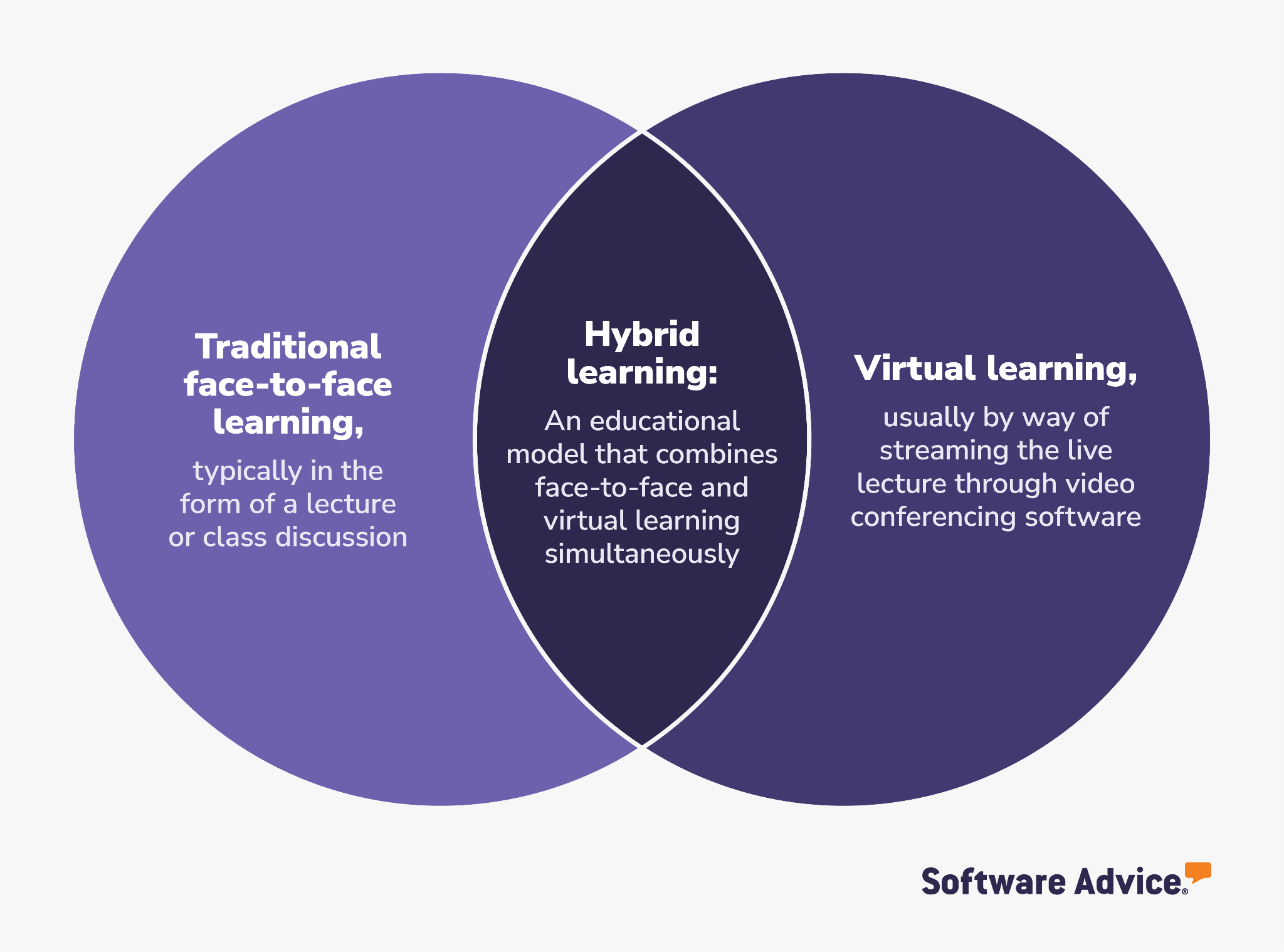
In a hybrid learning environment, a teacher will typically give a live, face-to-face lesson. With the help of video conferencing software, that lesson will be broadcasted remotely so that students who are not physically present can still participate. Class activities such as quizzes, discussions, and brainstorming sessions are still a large part of hybrid learning models, but they require an LMS in order to accommodate remote students.
What are the benefits of a hybrid learning model?
There are many benefits to utilizing a hybrid learning model—let’s take a look at some of the most important ones.
1. It creates a more accessible learning experience
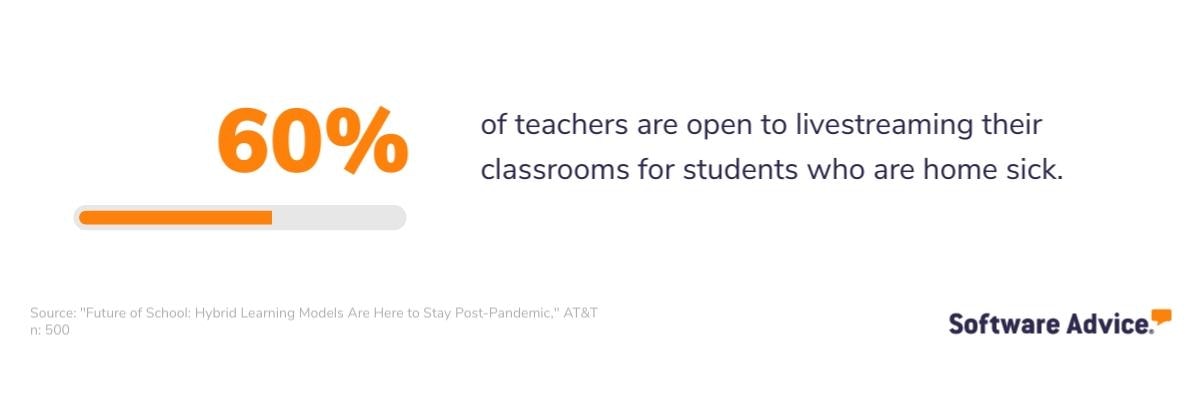
The COVID-19 pandemic brought to light the importance of equipping students with ways to learn outside of the traditional classroom. And while in-person instruction is not going anywhere, the value of providing remote learning options is more apparent than ever.
For instance, not only does hybrid learning allow students to prioritize their mental and physical health when deciding how they will attend class, it also minimizes the effect of day-to-day disruptions (such as appointments or caretaker responsibilities), by enabling students to forgo their commute and log on remotely.
In some cases, it may also extend the geographical reach of education by providing individuals in remote areas educational opportunities they might not have otherwise.
2. It can alleviate challenges that arise from teacher shortages
In early 2022, the National Education Association (NEA) reported that 86% of its members say they have seen more educators leaving the profession or retiring early since the start of the COVID-19 pandemic[5]. This pattern of turnover is putting strain on those who are tasked with supporting an understaffed school.
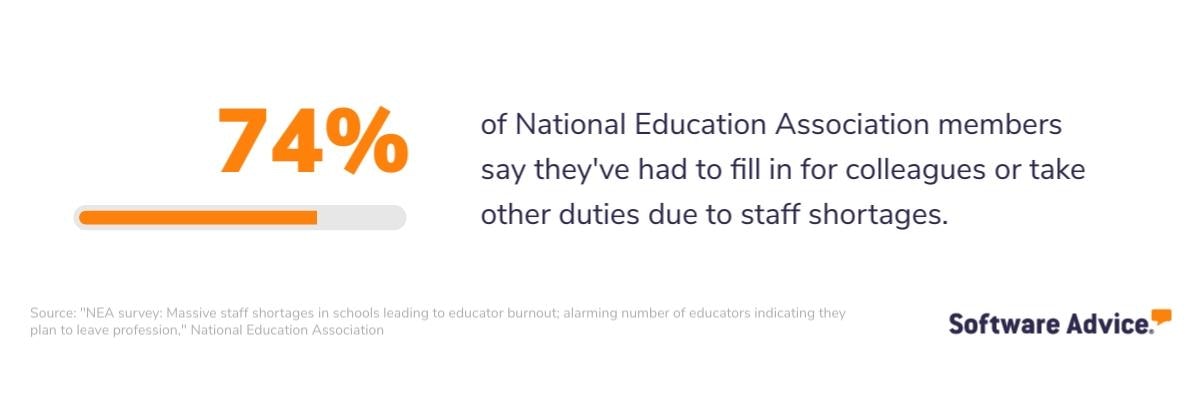
And while there is a limit to the number of students who can comfortably learn in a physical classroom, hybrid learning can help by increasing class sizes. That’s not to say that hybrid learning is a substitute (pun intended) for a full staff. However, embracing this strategy will allow the teachers you do have to reach more students. And in fact, many high schools turned to a hybrid learning model when staffing shortages peaked in 2021[6].
3. It provides a more personalized learning experience
At the top of this guide, we mentioned that the majority of teachers, principals, and administrators believe that digital learning tools are more effective than traditional tools for personalizing instruction. This is because learning management systems, as well as other e-learning tools, are often built with features that allow both students and teachers to customize the learning experience.
For example, some platforms have AI-based “tutors” that give learners hints based on their progress through a lesson. Personalized learner paths, which allow admins to assign a sequential set of modules to individual learners, are also a common feature of LMS.
Plus, LMS offer the ability to accommodate different learning styles by supporting a variety of course material formats including videos, quizzes, slides, and downloadable PDFs. There are also features that cater to social learning, including discussion forums, gamification elements such as leaderboards and polls, newsfeeds, and collaborative tools.
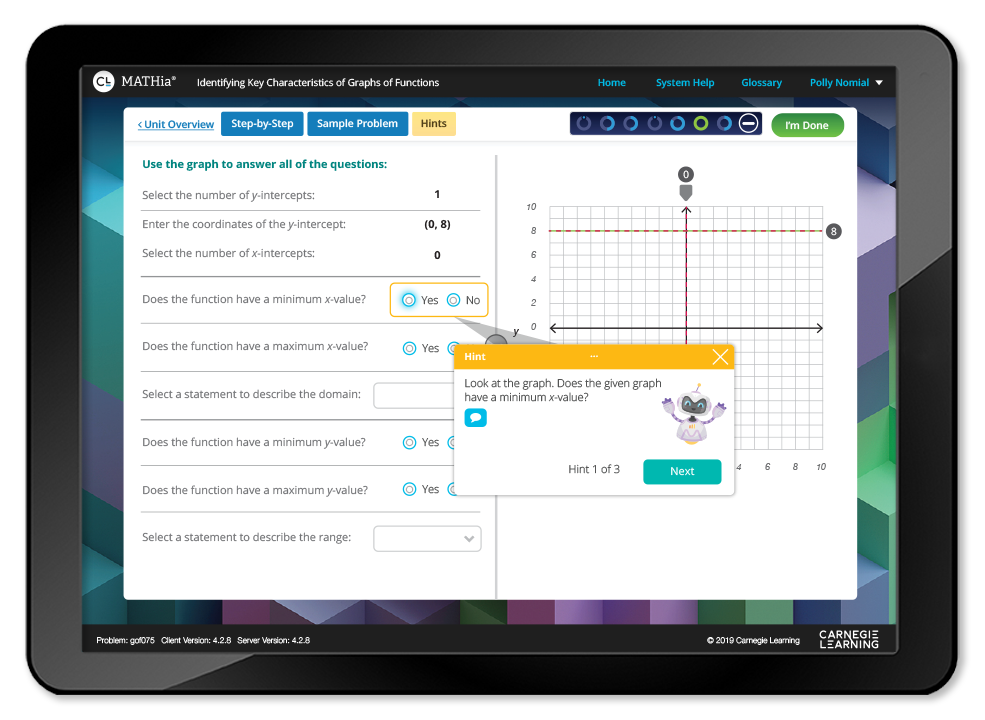
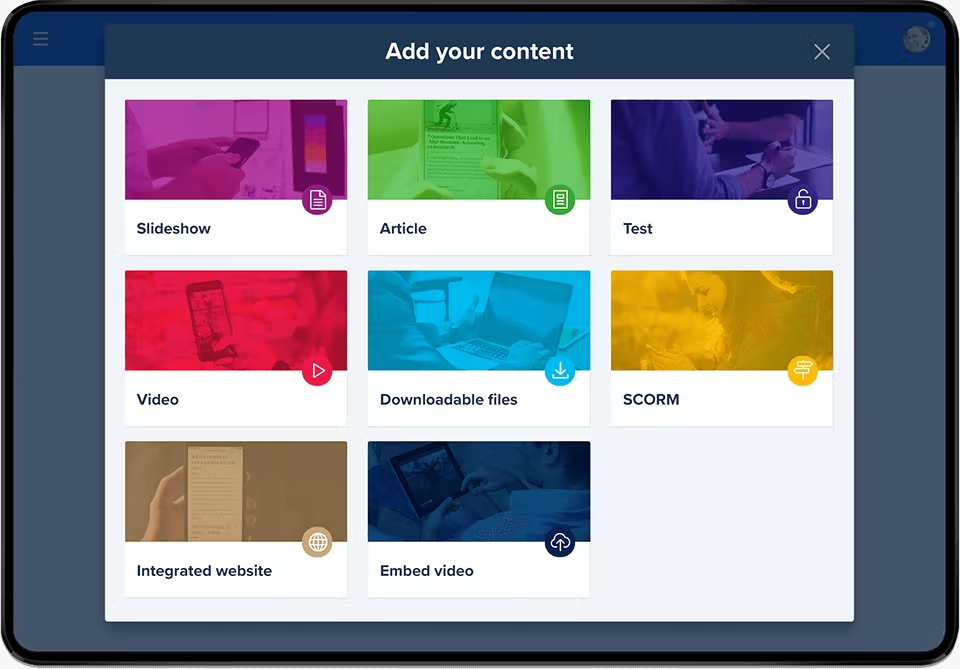
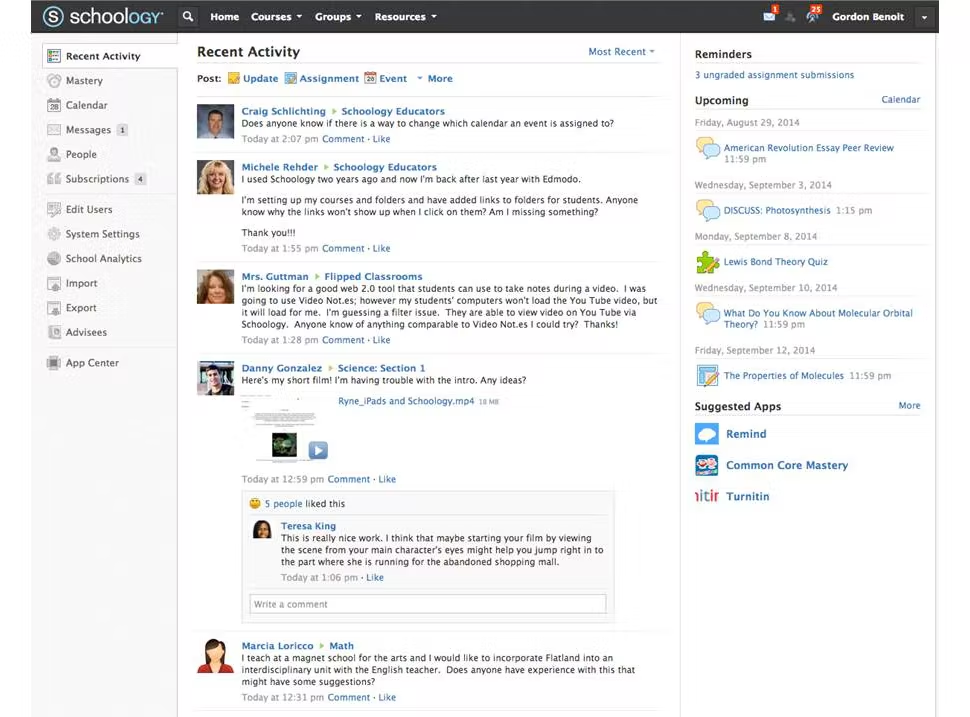
From first to last: 1) A hint is given based on the learner’s performance in Carnegie Learning’s MATHia[7], 2) A glimpse into the kinds of content that can be added to a course in eloomi (Source), 3) A newsfeed in Schoology shows students request feedback from their peers (Source)
Of course, there are downsides to hybrid learning as well. We’ve summarized the three most concerning considerations below and offer advice on how to avoid these pitfalls.
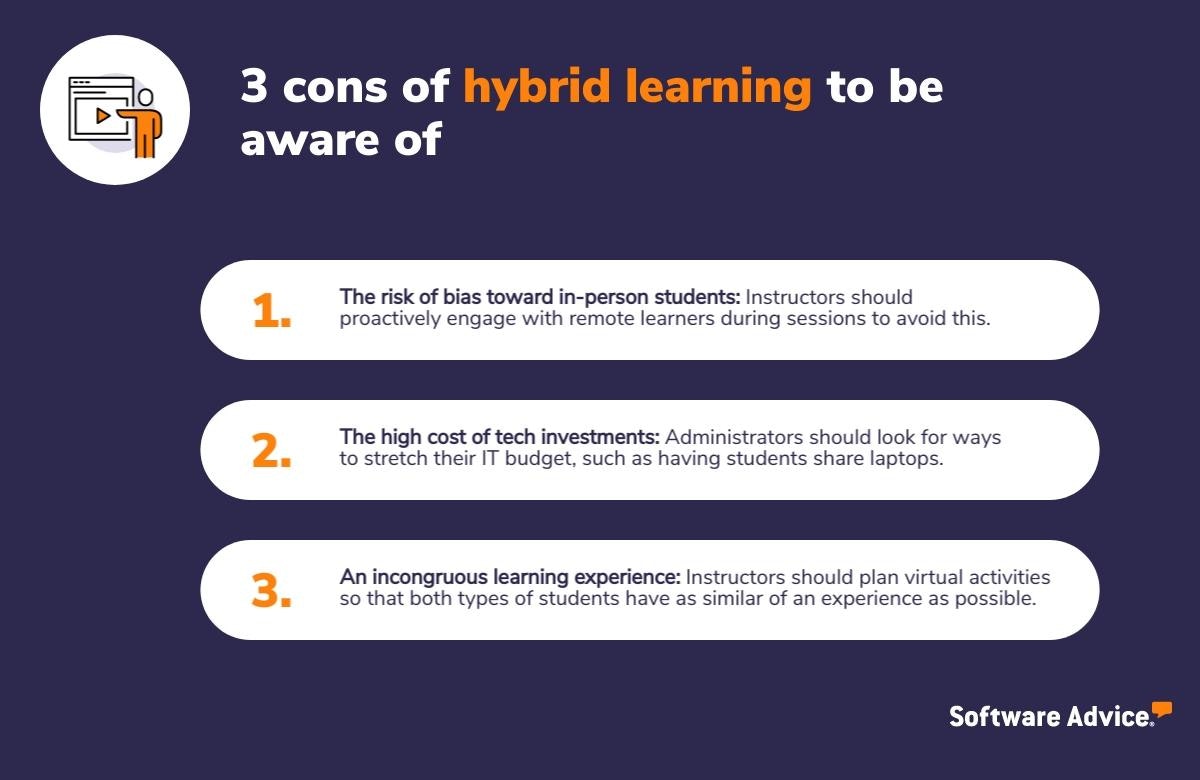
Next, we’ll give an overview of hybrid learning tools that help this model be successful.
Hybrid learning tech: What you need to get started
There are two main categories of hybrid learning tools: Software, such as learning management systems and video conferencing platforms, and hardware, such as laptops, digital whiteboards, and webcams.
First, let’s talk about software.
3 kinds of software tools that enable hybrid education
1. Learning management systems
Learning management systems (LMS) are a type of e-learning tool that allow educators to create custom courses, measure students’ knowledge through quizzes and tests, and track learners’ progress and performance over time with the help of reporting dashboards.
Currently, LMS are the most popular tool used by educators, and in fact, Gartner predicts that by 2025, 75% of all K-12 organizations globally will use an LMS to manage in-person and remote classroom activities[8].
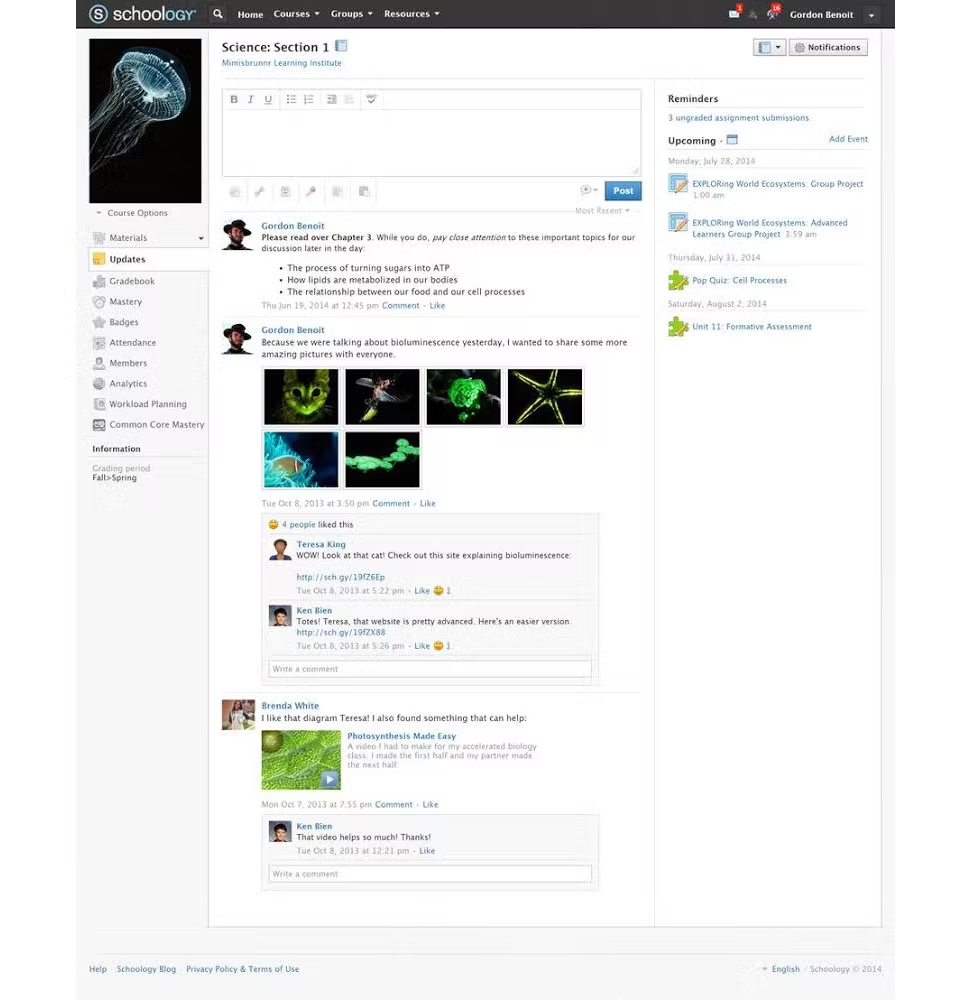
A course as seen by a learner in Schoology (Source)
Tool tip: Visit our buyers guide for LMS to determine what type of buyer you are, compare top-rated tools, and learn about the features these platforms offer.
2. Virtual classroom platforms
A subcategory of learning management systems, virtual classroom platforms offer features similar to that of an LMS, but with the addition of conferencing and collaboration capabilities. These additions are particularly helpful for hybrid learning because they enable remote students to participate in classes live (as opposed to watching a recording of it later on).
And speaking of engaging students, check out this short video:
Tool tip: There are several features of virtual classroom software you can use to create an engaging experience for your students including polls, interactive whiteboards, live chat, and breakout rooms.
3. Video conferencing software
Video conferencing tools are a form of collaboration software that allow users to hold face-to-face meetings while in separate locations. These tools also allow users to screen share, live chat, and virtual whiteboard.
Tool tip: You can combine the functionalities of a video conferencing tool and a learning management system for an experience similar to that offered by a virtual classroom platform. This may be more affordable than investing in a robust virtual classroom platform, especially considering there are many free video conferencing tools on the market.
3 hardware essentials to have on-site
Computers
Students will need to have a laptop or desktop computer in order to access whatever learning platform your school chooses. There are a few ways you can approach this depending on your school’s budget and students’ age range:
Arrange to hold hybrid classes in a computer lab on your school’s campus.
Invest in a class set of laptops or tablets that can be shared amongst students.
Encourage students to bring their own devices to class (this option is best reserved for high school or college age students).
A webcam or video recorder
Teachers will need a video camera of some sort in order to stream their lectures. In some cases, the computer or laptop they’re using may have a webcam that will suffice. If your school has the budget available, we suggest investing in a smart video camera that has a 360-degree view and a microphone system built in.
Interactive whiteboard
More of a nice-to-have than an essential, an interactive whiteboard is a tool that can revolutionize your classroom. Interactive whiteboards (also called smart boards) are flat-panel displays that allow teachers to project and interact with visual aids from their computer such as images, graphs, 3D models, and videos.
Before you go: Answer these questions to determine the feasibility of implementing a hybrid learning model
Embracing hybrid learning is the key to offering both an engaging and accessible learning experience for your students. In this guide, we’ve covered all of the basics of hybrid learning, including what it is, its benefits, and the tools you need to get started.
If you’re interested in kicking off a hybrid learning strategy at your school, you can start measuring the feasibility by answering the following questions:
What tools will we need to invest in at minimum for a successful hybrid learning environment? Can you get away with using your school’s computer lab, or would you need a full set of laptops?
How will we ensure that students receive a similar experience in-person and remotely? Define the best practices you’ll put in place in order to make sure learners are receiving instruction of the same quality in-person and online.
How will we apportion the time spent in a face-to-face environment versus online? Will it be up to students whether they’ll attend class in person or online? Make sure you have guidelines in place in regards to attendance before kicking off a hybrid learning strategy.
Will you grade students based on participation? If so, make sure that you have a strategy for doing so, and that you explain how this will work to students before class begins.
And finally, check out these related resources for more information related to tech in education:
Sources
Leverage the K-12 Education Digital Learning Maturity Model, Gartner
What Is Hybrid Learning?, ViewSonic
Massive staff shortages in schools leading to educator burnout; alarming number of educators indicating they plan to leave profession, National Education Association (NEA)
A School District Vowed to Stay Open, Until Its Staffing Ran Out, The New York Times
MATHia, Carnegie Learning
Market Guide for K-12 Education Learning Management Systems, Gartner
Note: The applications mentioned in this article are examples to show a feature in context and are not intended as endorsements or recommendations. They have been obtained from sources believed to be reliable at the time of publication.